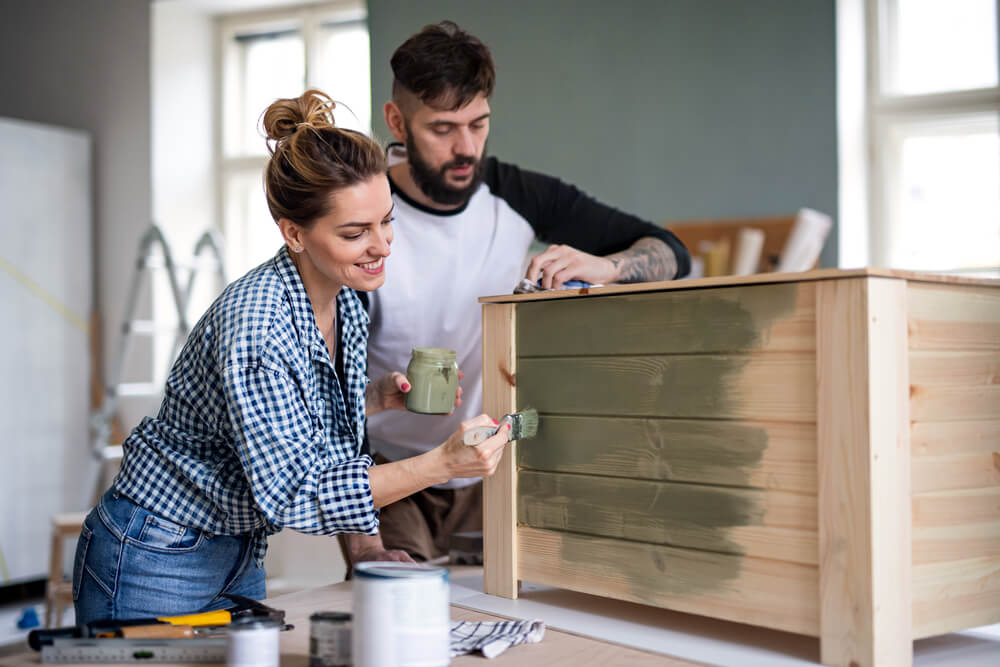
Restoring and refurbishing furniture can breathe new life into old pieces, transforming them into stunning focal points for any space. From vintage furniture restoration to reviving secondhand treasures, the art of furniture refurbishment not only adds character and charm to your home but also contributes to sustainable living by repurposing items that might have been discarded.
In this informative piece, we will delve into the process of restoring furniture, offering tips on how to bring back the beauty of old pieces and highlighting the impactful work of organizations like Habitat for Humanity Restore, which not only provides affordable furniture options but also supports community initiatives.
Join us as we explore the world of furniture restoration and discover the joy of giving new life to old treasures!
Introduction to Furniture Restoration
Importance of Refurbishing Furniture
Refurbishing furniture is important for several reasons. It’s an environmentally friendly practice that reduces waste by giving old furniture a second chance at usefulness, instead of ending up in a landfill. By restoring furniture, we’re also preserving craftsmanship and design from different eras, which might otherwise be lost.
Moreover, refurbishing can be highly cost-effective, offering a way to own high-quality furniture without the new furniture price tag. For individuals and families on a tight budget, this can make a significant difference in their living spaces. Organizations like Habitat for Humanity Restore highlight this importance by providing access to affordable refurbished furniture and by using the proceeds to help build homes and communities.
Through furniture restoration, we can achieve both aesthetic and practical benefits while contributing positively to sustainability and community welfare.
Understanding the Value of Secondhand Furniture
Secondhand furniture holds immense value, both in terms of quality and history. Many older pieces are built with a level of craftsmanship that’s hard to find in modern, mass-produced items. From solid wood constructions to hand-carved details, these pieces can offer superior durability and unique aesthetics. Moreover, each item carries a story with it, contributing to a rich tapestry of history that new furniture simply doesn’t possess.
Additionally, choosing secondhand furniture is a smart financial move. It often allows for significant savings while still acquiring pieces that can become highlights in one’s home. As we learn how to restore furniture, we not only invest in these inherent values but also tap into the potential of creating something truly one-of-a-kind.
By recognizing the worth of secondhand furniture, we also support a circular economy, which is essential for a sustainable future.
The Art of Restoring Vintage Furniture
How to Restore Furniture: A Basic Guide
Restoring furniture is a craft that combines patience with creativity. To start, assess the piece for any damage and determine the extent of the restoration needed. Simple cleaning can often go a long way; use gentle cleaners to preserve the item’s integrity. For more thorough work, stripping old paint or varnish might be necessary, followed by sanding to create a smooth surface. When choosing new finishes, consider the original style and era of the piece to maintain its vintage charm.
For upholstery, select fabrics that complement both the furniture’s design and your home decor. Always test products on a small, inconspicuous area first to ensure they work well with the material. Remember, the goal is to honor the furniture’s past while preparing it for a renewed life. With these basic steps, you can begin the journey of transforming an old piece into something beautiful and functional.
Old Furniture Restoration: Breath of New Life
Old furniture restoration is a transformative process that goes beyond mere repair. It’s about honoring the piece’s history while adapting it to modern living. Begin by thoroughly cleaning the item to reveal its true state. For wood, this may involve re-gluing loose joints or replacing missing parts. Match the wood type and grain for consistency.
When it comes to finishing, choose stains or paints that enhance the original character, or perhaps opt for a bold new look that contrasts yet complements the piece’s heritage. For seating, consider re-stuffing cushions and repairing springs to bring comfort back to the furniture.
Finally, apply a protective coat to shield the piece from future wear. This careful attention to detail not only revives old furniture but also creates a conversation piece that carries the patina of the past into the future.
Habitat for Humanity Restore: A Treasure Trove for Refurbishing Enthusiasts
Discovering Habitat for Humanity Restore
Habitat for Humanity Restore is a remarkable resource for anyone interested in refurbishing furniture. These nonprofit home improvement stores and donation centers sell new and gently used:
- furniture,
- appliances,
- home accessories,
- building materials at a fraction of the retail price.
The inventory is often rich with potential, featuring items that range from timeless antiques to modern pieces waiting to be revitalized.
What sets the Restore apart is its mission: proceeds are used to help build and repair homes for families in need. Shopping or donating to the Restore not only provides you with the materials for your next project but also supports Habitat for Humanity’s broader goal of ensuring everyone has a decent place to live.
By participating in the Restore ecosystem, you contribute to a cycle of giving that strengthens communities and supports sustainability.
How Habitat for Humanity Restore Supports the Community
Habitat for Humanity Restore plays a crucial role in supporting local communities. The sales from these stores directly fund Habitat’s mission to build and renovate homes for families in need of affordable housing. By providing a place where people can donate and purchase secondhand items, Restore helps reduce waste and promote recycling, aligning with sustainability goals.
They also offer a low-cost option for individuals and families looking to improve their living spaces without breaking the bank. Beyond the economic impact, Restores are a hub for volunteers, offering hands-on experiences that teach valuable skills in furniture restoration and home repair.
These volunteer opportunities foster a sense of community pride and engagement. Through its operations, Habitat for Humanity Restore not only strengthens the local economy but also builds the foundation for a stronger, more interconnected community.
Real-Life Stories: Transformation Through Refurbishing
Success Stories: From Worn-out to Wonderful
The journey from worn-out to wonderful is often filled with inspiring success stories that showcase the impact of furniture refurbishing. One such story involves a dated, scratched dining table that was destined for the landfill. Through the efforts of a local artist and the resources provided by Habitat for Humanity Restore, the table was sanded down, the intricate wood grain was carefully stained, and it found a new home with a young family, becoming the centerpiece of their dining room.
Another tale features a set of dilapidated chairs that were lovingly reupholstered and painted by community volunteers, giving them a vibrant new life. These stories not only illustrate the potential of secondhand furniture but also highlight the community spirit and the collective effort to promote sustainability.
Each refurbished piece carries with it a narrative of transformation and a testament to the power of restoration.
Impact of Refurbishing: More than Just Aesthetics
The impact of refurbishing furniture extends far beyond aesthetics. Each piece restored represents a conscious decision to value sustainability over disposability. A family that chooses to refurbish rather than buy new is not only preserving a piece of history but also reducing their environmental footprint. In community spaces, refurbished items can create a sense of identity and continuity, connecting the past with the present.
Such transformations also have economic benefits, often providing affordable alternatives to expensive new furnishings. The process of restoration can even have therapeutic effects, offering a creative outlet and a sense of accomplishment. In educational settings, refurbishing projects teach valuable skills and the importance of resourcefulness.
Ultimately, the act of refurbishing furniture underscores a commitment to a more thoughtful and intentional way of living, underpinned by care for the environment and community cohesion.
Get Involved: Contribute and Participate
Volunteer Opportunities at Habitat for Humanity Restore
Volunteering at Habitat for Humanity Restore offers a unique opportunity to make a tangible difference in the community. Volunteers play an essential role in the Restore’s operation, from sorting donations and pricing items to assisting customers and arranging displays. These tasks provide a hands-on way to support Habitat’s mission while learning new skills in retail management and customer service.
For those with a passion for refurbishing, volunteering can also involve repairing and refreshing donated items, which can then be sold to support affordable housing projects. Beyond the immediate impact, volunteering is a way to connect with like-minded individuals and become part of a community dedicated to positive change. Whether you’re looking to give back, gain experience, or simply be a part of a worthwhile cause, Habitat for Humanity Restore welcomes volunteers with open arms.
Ways to Support: Donations, Sponsorships, and More
Supporting Habitat for Humanity Restore can take many forms, each making a significant impact. Donations are the lifeblood of Restores, and they can range from furniture and appliances to building materials and home goods. All items are resold at affordable prices, with the proceeds funding the construction and repair of homes.
Monetary contributions are also vital, providing the necessary funds for Habitat’s housing projects and operational costs. For businesses and organizations, sponsorships offer a chance to contribute to the community while gaining visibility. Another way to support is through shopping at Restore, where every purchase helps fund Habitat’s mission. Engaging in advocacy and raising awareness about Habitat’s work are also invaluable forms of support.
These efforts can help drive policy changes and generate more resources for affordable housing. By choosing to donate, sponsor, shop, or advocate, you can be part of a larger mission to create a world where everyone has a decent place to call home. If you believe in this mission, call us today and contribute!







